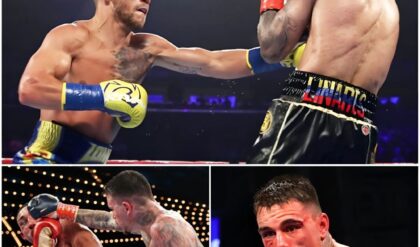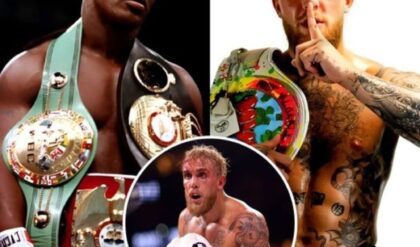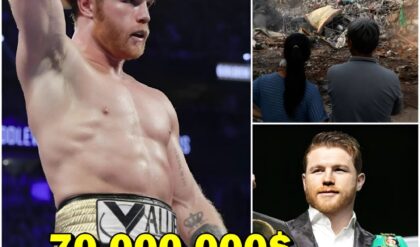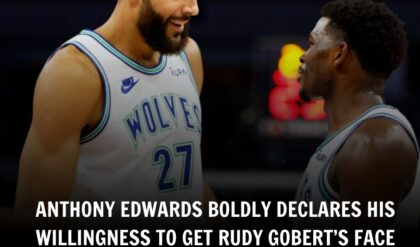“We’re just two colored boys from the ghetto and we have the whole world watching us in the greatest event of all time!”

Thus did Muhammad Ali describe himself and Joe Frazier hours before they faced off at Madison Square Garden 50 years ago this week in a highly-anticipated rematch, the second in a trilogy of iconic slugfests between the pair of champion boxers.
Promoters dubbed the contest “Super Fight II,” a title that never stuck.
Seldom does the second Ali-Frazier fight make it onto boxing historians’ rankings of history’s greatest heavyweight title bouts, or of Ali’s best performances—an honor routinely accorded the first and third matches.
It’s time that changed.
The previous Ali-Frazier meeting, hailed as “The Fight of the Century,” also held in the Garden, in March 1971, had been an event of global significance: The first fight between two undefeated heavyweight champions, fraught with the fiery politics of the late ’60s and early ’70s.
Ali was pretty-faced and fleet-footed, a rhyming-and-jiving convert to Islam attempting to regain the belt after three-and-a-half years of exile, imposed after he resisted military induction into the Vietnam War as a conscientious objector.
Plodding and poorly spoken, Frazier was the hard-luck son of a South Carolina sharecropper who had captured Olympic gold back in 1964.
A decade later, Frazier was now a favorite of Richard Nixon’s Silent Majority, which viewed the conflict in Vietnam more favorably.
For 15 grueling rounds, Ali worked his left jab during that first match, firing off blinding combinations to his opponent’s face, while Frazier, bobbing and weaving, a hard target, moved in relentlessly, punishing Ali’s head and midsection.
Less than a minute into the final round, Frazier uncorked a left hook to Ali’s jaw that briefly floored The Greatest.
The Garden erupted.
Frazier drew the unanimous decision — and a three-week stay in the hospital.
Now, as the Age of Sequels dawned— “The Godfather Part II” was soon to debut — Ali and Frazier agreed to meet, on Jan. 23, in the Manhattan studios of ABC’s “Wide World of Sports” to review the videotape of that first match alongside host Howard Cosell.
As usual, Ali taunted Frazier cruelly about his looks and education, and the latter, three-and-a-half inches shorter than Ali — his reach a full six-and-a-half inches shorter — had enough.

Boy, how you figure I’m ignorant? asked the casually-clad Frazier, standing menacingly over his rival.
In an instant, Ali, in a dark three-piece suit, rose to pre-empt Frazier’s aggression with a headlock — Sit down quick, Joe! — as producers, technicians, and flunkies dove onto them, muffled microphones scraping and scratching as the duo tumbled from the foot-high riser to the concrete floor, wrestling like school kids.
Citing “deplorable conduct” that “demeaned the sport of boxing,” the New York State Athletic Commission later fined them each $5,000.
So when the bell sounded to open Super Fight II a few days later, there was already bad blood and the Garden audience — 20,748 strong, larger than the first Ali-Frazier bout, celebrities shimmering in extravagant Soul Chic threads — expected war.
But of what intensity?
Super-Fight II was to be a 12-round match.
Frazier, then 30, had lost the heavyweight championship in Jamaica a year earlier, when George Foreman pummeled him to the canvas six times in two rounds, prompting Cosell’s legendary call: Down goes FRAY-zhuh! Down goes FRAY-zhuh!
Ali, at 32, had fought 139 rounds since the first Frazier fight in 1971, including two matches with a young ex-Marine named Ken Norton, who broke Ali’s jaw in March 1973.
Moreover, Ali’s right hand was injured and weak, requiring cortisone shots.
Of the third man in the ring, referee Tony Perez, Cosell said he possessed “the youth, the know-how, the swiftness, and the strength to execute his job.”
Lithe and limber, Ali danced like the Ali of old: a balletic, backward-circling motion from which he struck like a cobra.
He was first to connect, 35 seconds in, with a right-left-left combo that thrilled the crowd.
Though he had pledged to avoid the clowning and rope-a-dope tactics that undermined his performance during his first battle with Frazier, The Greatest couldn’t resist displays of the Ali Shuffle — his legs kicking in a distracting blur—and a playful wink at the sportswriters sitting ringside.
Near the end of Round 2, Ali threw a sharp right that lifted Frazier off the canvas, just as Foreman had done in Jamaica.
Frazier staggered to the ropes
.
“Joe’s backing off for the first time in the fight!” Cosell shouted. “He was hurt by that right of Ali’s!”
Suddenly, Perez interposed and waved the combatants to their corners—but no bell had rung; in fact, the ref was 20 seconds early.
He swiftly realized his error and bade the fighters to resume.
Ali didn’t even have enough time to put his mouthpiece back in.
Still, Ali battered Frazier anew until the bell,10 seconds later, sounded for real.
Frazier had been spared major damage, if not an early knockout.
“A confusing incident,” Cosell mused.
After that Ali’s dancing slowed, with more clinching—but every round featured furious trades of blows.
The fighters’ blended rhythms and repertoires dictated that neither could score without taking a shot, or several, in return.
As in their first fight, Frazier came on strong in the middle rounds, smiling, mocking Ali’s dancing, goading him in clinches — You got no sting in your punch! — only for Ali to snap Frazier’s head back with more jabs and hooks.
“Joe was actually taunting Ali and got belted!” Cosell observed.
By Round 10, Ali’s nose was bleeding.
But the boxing exhibition continued.
Under constant exhortation from his cornerman-trainer Drew Bundini Brown — Don’t stop dancin’! Box ’im to death! — Ali stayed off the ropes.
Near round’s end, he pounded Frazier’s face six consecutive times.
As Round 11 opened, the judges and Perez favored Ali on their scorecards.
Larry Merchant of The Post declared that Ali was so far ahead on points, “He can’t lose unless he gets knocked out.”
His opponent knew it, too.
“Frazier swinging wildly,” Cosell said.
As in their first bout, Ali finished strong, landing nine punches in seven seconds.
When the bell for Round 12 clanged, the fighters gamely touched gloves at ring-center.
Looking to dazzle the judges one last time, Ali reprised the Shuffle.
Cosell sensed an anticlimax: “I think there’s a realization among everybody that this…bout between two past champions…was lacking much of the excitement of the prior fight. It’s been a boxing contest on Ali’s part, and he has scored often… but quite clearly without power…And Frazier has shown nothing of what he showed in the first fight.”
When Ali’s victory by unanimous decision was announced, spectators mobbed the ring.
“Absolute bedlam prevails!” Cosell screamed.
Climbing in, the broadcaster found Frazier’s eyes swollen like lumpy potatoes, his lower lip split and bloodied.
Smokin’ Joe seemed philosophical about the loss.
“I got no argument about nuthin’,” he told Cosell.
The next day’s Post declared: “ONE AND ONE.”
“Joe Frazier is great,” he said, “a much better fighter than I thought,” adding his opponent “had me out on my feet twice.”
Nine months later Ali got his shot at George Foreman.
Held in the central African nation of Zaire, now the Congo, “The Rumble in the Jungle” capped Ali’s return from exile with a stunning eighth-round knockout of the bigger, younger champion, widely thought invincible.
Ali had reclaimed the heavyweight crown 10 years after first capturing it, as an 8-1 underdog named Cassius Clay, from Sonny Liston, another mauler previously thought invincible.
Three more fights followed the “Rumble” for Ali — 41 rounds of him looking sluggish, getting hit altogether too often — before the champion gave Frazier a chance to avenge his loss in Super Fight II.
The final meeting between Ali and Frazier, staged in the Philippines in October 1975, was dubbed “The Thrilla in Manila,” and is often cited as the greatest, most brutal heavyweight title fight of all time.
Thrilla mirrored the earlier contests: Ali dominating early, Frazier surging in the middle, the champ rising, Lazarus-like, in the final rounds.
Frazier’s face was so disfigured his corner refused to allow him to answer the bell for the 15th round: a TKO, the trilogy’s only knockout.
Super Fight II is the forgotten installment in the Ali-Frazier trilogy.
“Both men were starting to slip a little bit, but they were both such fierce warriors, it’s one of those fights that’s painful to watch,” Jonathan Eig, author of the 2017 bestselling biography Ali: A Life, said of the fight recently.
Fifty years on, the match warrants re-examination, and a conclusion different from the anticlimax Cosell discerned.
Described by the Associated Press as “action-packed,” it was both a terrific spectacle and one of Ali’s greatest performances: the bout where he most convincingly dispatched Frazier, who always gave him so much trouble, and Ali’s last great dancing exhibition.
The bell has been sounded — and a historical reexamination is under way.
James Rosen is chief White House correspondent for Newsmax and the author, most recently, of “Scalia: Rise to Greatness, 1936-1986.”





